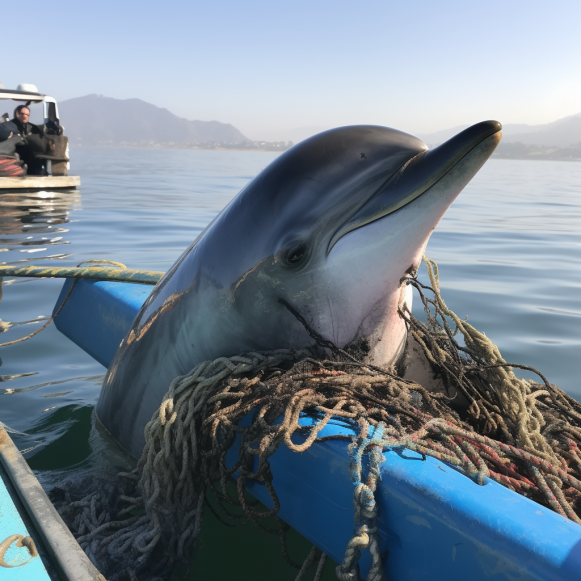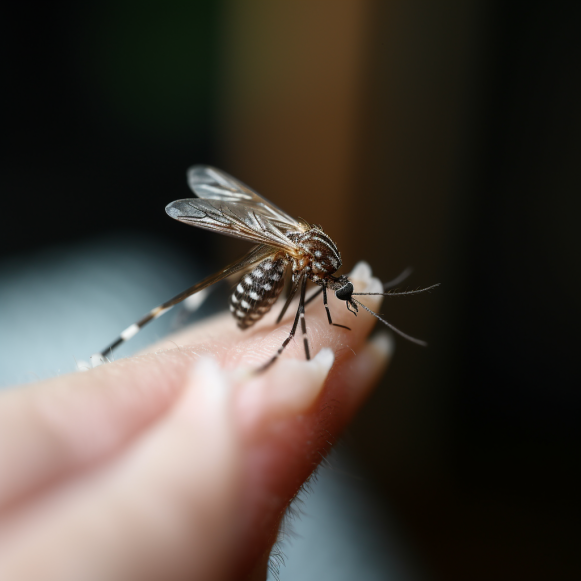First permits issued for new swordfish fishing gear that’s safe for marine mammals

Permits are being issued to commercial swordfish fishermen who opt out of using large drift nets in favor of a new system that does not capture whales or dolphins.
The National Marine Fisheries Service recently issued the first 50 permits to fishermen using a new deep-set buoy gear that, unlike the mile-long, 100-foot-wide nets that drift in the ocean tangle up fish, only uses hooks to target swordfish.
The permits will be given to drift net fishermen who agreed to be the first to use the new gear and to fishermen who took buyouts to permanently abandon the mesh nets. The plan is to use the gear to create a new fishery and issue 25 new permits each year until 2027.
Geoff Shester, a senior scientist with the nonprofit advocacy group Oceana, was among those who lobbied for the new gear for years, calling the permits “a banner day for whales, dolphins, and sea turtles that swim off our shores,” as well as “a massive leap forward for sustainable swordfish fishing in California.”
“A thriving and profitable swordfish fishery that does not endanger marine life is a win-win for everyone,” Shester said, adding that buoy gear is a happy medium between drift nets and the other traditional option of harpooning.
The buoy gear is set to catch fish during the day, and fishermen keep a close eye on the situation. Mesh drift nets floated across the ocean for hours at a time, mostly between sunset and sunrise. And the nets, invented by two San Clemente fishermen, frequently caught whales, dolphins, and sea turtles, earning them the moniker “curtains of death.”
While the fishery is small, with only about 20 boats fishing between San Diego and Santa Barbara, it has taken nearly two decades to develop new equipment. During that time, scientists, fishermen, environmental groups, and legislators worked together to find solutions that would prevent the killing of marine mammals while also ensuring the multi-million dollar California swordfish fishery remained sustainable and profitable.
State legislators demanded in 2015 that the Pacific Fishery Management Council and the National Marine Fisheries Service switch to alternative fishing methods. In 2018, then-Gov. Jerry Brown signed legislation requiring the California Department of Fish and Wildlife to obtain funding to assist fishermen in making the transition to new gear.
Active fishermen who agreed to give up their drift nets received a $110,000 buyout.
According to Shester, Oceana raised more than $1 million to activate the legislation, and the Ocean Protection Council and California Legislature contributed the remaining $2.2 million to allow all fishermen who signed up for the transition program to participate.
Some fishermen filed a lawsuit, and the state settled by not enforcing the ban on drift net fishing for those with federal permits. President Joe Biden signed legislation in January to phase out the remaining federal permits and ban large mesh nets nationwide by 2027.
According to the Pacific Fisheries database, 123 metric tons of swordfish were caught by drift net in 2017 and 49.5 metric tons were caught by a combination of harpooning and buoy gear before the legislation mandating the transition to new gear.
In 2020, nets caught 24 tons of fish, while harpoons and buoy gear caught 90 tons. In 2022, 20 tons of swordfish were net fished and 40 tons were hooked with buoy gear and speared with harpoon – but Shester said the fish have recently been harder to find.
According to the data, other species caught have decreased significantly.
Shester and other supporters of the new gear claim that, in addition to saving sea life, the change results in higher quality swordfish, which sell for more than drift net-caught swordfish. He claims that the fish caught are of higher quality because they are fresher.
The new equipment works by having buoys connected to a main fishing line float in the surf. Attached hooks await swordfish at a depth of about 1,200 feet, where they typically swim, and fishers monitoring their buoys are immediately alerted and can quickly pull them up.
Shester believes that as the gear improves, fishermen will be able to use it to catch other fish by moving the hooks up and down the lines to the depths where those species can be found. Currently, fishermen can use up to ten lines and three hooks per line.
The catch is sold to restaurants or fish markets with wholesale licenses, or to fish warehouses in San Pedro and San Diego, where the fish is processed into fillets or steaks.
Jim Heflin, who began as a teen deckhand on a harpoon swordfish boat out of Newport Beach, later used drift nets on his own Chula, a 68-foot commercial vessel now based in San Diego.
He wholesales his fish to restaurants in California and Arizona, including three in Scottsdale that he owns. He was one of the first five fishermen to volunteer to test the buoy equipment. He is now one of the first 50 people to obtain a permit.
“I was never a proponent of what the net fishery does,” said Heflin, who has worked with the new gear for several years and considers it “successful” for what he does, which is sell the fish wholesale and use it in his own restaurants.
According to him, the restaurants and fish markets are known for selling “sustainably caught swordfish,” for which people are willing to pay a premium. “It’s part of our brand at Chula Seafood.”
Heflin went out with his boat two weeks ago and caught four or five fish on the hooks of the new gear in three days, he said. He remembered bringing in more than 14 in a similar period during a profitable net trip. But, he claims, the fish caught this way are superior.
“It’s cold, 45 degrees, and the fish come up instantly,” Heflin stated. “The product is the best because they’re not sitting on the end of a harpoon line or in a net.”
Despite the fact that the new gear works for him, Heflin claims that some net fishermen do not find it as profitable as the nets. The number of fish is lower, and some argue that this alone makes swordfishing a semi-retired job. Furthermore, not all fishermen have a pipeline to sell it wholesale and must sell it on the open market, where prices fluctuate and competition is fierce due to cheaper, imported fish.
Nonetheless, Shester and Heflin believe there is a market for responsibly caught swordfish and that it can be developed to be even more productive than nets.
“We see market demand for the product,” Shester said, adding that last year the Monterey Bay Aquarium Seafood Watch program recommended deep-set buoy gear caught swordfish as a “Best Choice,” resulting in higher prices and market access. “The plan is to start small and gradually expand the fishery.” It’s a profitable venture as we raise awareness.”






